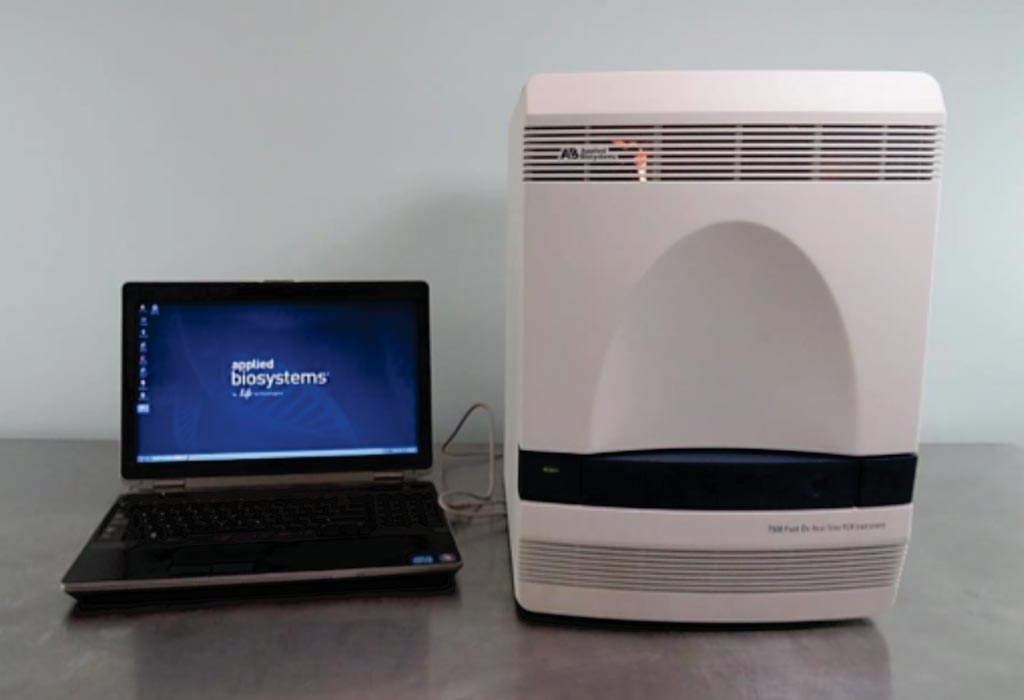Molecular Diagnostics Prevents Malaria in Blood Banks
By LabMedica International staff writers
Posted on 18 Oct 2018
Haemovigilance is required to identify and prevent the occurrence or recurrence of unwanted transfusion-related transmissions and to increase the safety, efficacy and efficiency of blood transfusions.Posted on 18 Oct 2018
Malaria can be transmitted by blood transfusion through donations collected from asymptomatic or parasitic donors. The parasites are released into the bloodstream during its life cycle and will therefore be present in donated blood by infected individuals and can be fatal to the recipient.

Image: The ABI 7500 Real-Time PCR system (Photo courtesy of Applied Biosystems).
Brazilian scientists collaborating with the Federal University of Pará (Belem, Brazil) obtained positive samples of Plasmodium vivax (22,000 parasites/µL) and P. malariae (400 parasites/µL) were obtained from patients with malaria and a positive sample of P. falciparum. Samples of potential donors were collected in two blood bank centers and among them, 1,324 were obtained from nine reference units and 900 were collected from blood donors in Porto Velho.
DNA samples were extracted from 150 µL blood by phenol/chloroform followed by ethanol precipitation method, with modifications. The DNA was quantified on NanoDrop ND 1000, in 260 nm to 280 nm wavelength range and final concentration was adjusted to 100 ng/µL. A real-time polymerase chain reaction (mt-qPCR) was performed to determine the presence and absence of the malaria parasite mitochondrial (mtDNA), based on primer extension and posterior hybridization with TaqMan probes on ABI Prism 7500 sequence detection system.
The team reported that malaria parasites were detected in 10 of 2,224 blood donors (0.45%). In all 10 positive samples, only P. vivax mtDNA was detected. The positivity for Plasmodium was observed in only three blood banks. The mt-qPCR was highly efficient, and the analytic sensitivity for P. vivax was determined (0.000006 parasites/µL). In samples collected in Porto Velho, only P. vivax was detected using both molecular diagnostic methods (mtDNA and 18S rRNA).
The authors concluded mt-qPCR is efficient for malaria molecular diagnostics, presenting promising results with good analytic sensitivity. It is a fast and easy molecular methodology to detect mtDNA of the three most frequent malaria parasites, presenting a potential for large-scale use in the prevention of transfusion-transmitted malaria by screening for potential donors as part of malaria haemovigilance in blood banks. The study was published on October 1, 2018, in the Malaria Journal.
Related Links:
Federal University of Pará













